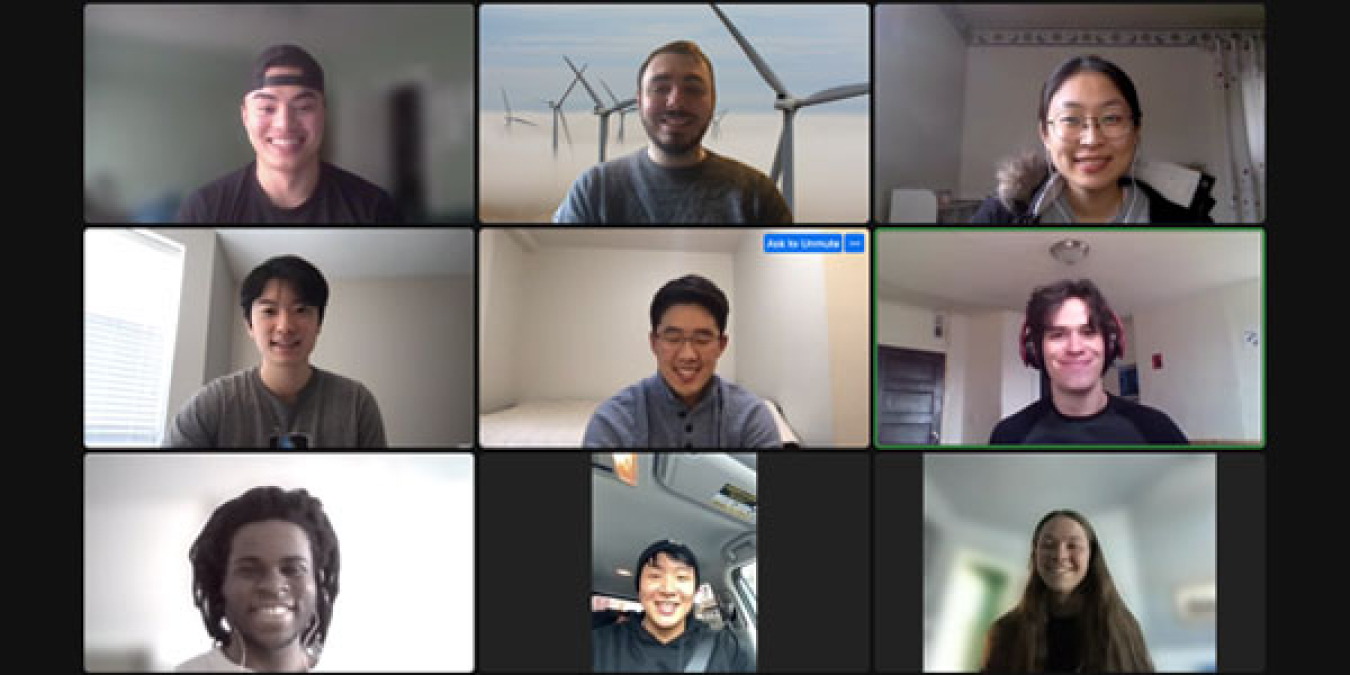Hopkins Student Wind Energy Team
Johns Hopkins University, Baltimore, Maryland
Faculty Adviser
Dennice Gayme, dennice@jhu.edu
Student Lead
Jonathan Spangler-Sakata, jspang11@jhu.edu
Vision and Mission
Our interdisciplinary, career-focused mindset is one of the key reasons many people say they joined our U.S. Department of Energy Collegiate Wind Competition (CWC) team. We have provided previously inexperienced members with the resources, patience, and time they need to develop the skills and confidence to enter the working world. Members also have the opportunity to connect with Johns Hopkins’ vast alumni network, learning firsthand about careers in wind energy from industry professionals at top companies.
By combining our open and development-focused philosophy with established industry connections, the team has created a winning formula. Regular meetings between subteams, industry mentors, the executive board, and faculty advisors mean that team members are constantly evaluating our performance and addressing areas where we can improve.
Background
Since competing for the first time and winning second place overall in 2021, our team has blossomed into a vibrant collection of motivated students. We are overseen by an elected executive board that works with six subteams, each of which are responsible for a different aspect of the year-long project. Because experienced subteam leaders can recruit directly from relevant major pools, our team boasts both broad and specialized academic knowledge. We pride ourselves on accepting all students from all majors and will never turn a student away who is eager to learn.

Top row (left to right): Jonathan Spangler-Sakata, Nathan Felmus, Kathy Cao.
Middle row: Dong-Woo Seo, Isaac Lee, Zach Galvarro.
Front row: Daniel Okereke, Samuel Choi, Kyra Rothwell
Strategy
The engineering subteams constantly collaborate to design and test iterations of the wind turbine subsystems. The team’s extensive design process includes computer-aided design, load analysis, finite element analysis, simulation software, and physical testing. This year’s team has been focused on maximizing structural stability and performance efficiency in harsher offshore conditions and ensuring continuous power output. The finance and siting teams have also been hard at work analyzing government and maritime regulations, as well as tax and other financial risks, to determine the best lease areas, wind turbines to use, and bid price.
In the 2022 CWC, we will solidify our yearly standing as a top contender, building and reinforcing networks with the industry, other schools, and our local community. This will model success for future competitions and create effective ways to pass down knowledge and strategy to future Hopkins Student Wind Energy Team cohorts.
Follow Us
This content was submitted to the U.S. Department of Energy by the team. Find more information on CWC 2022.

